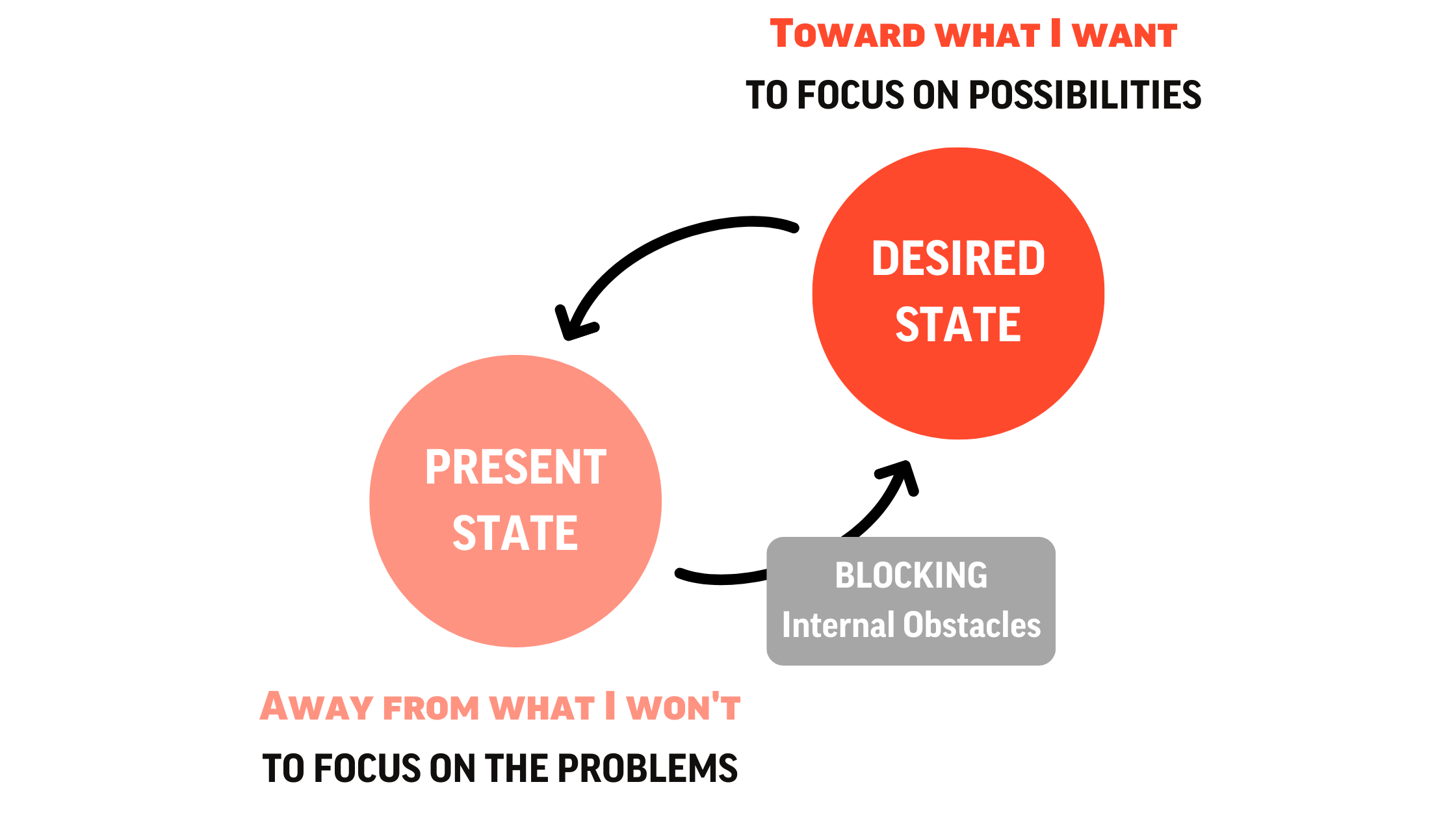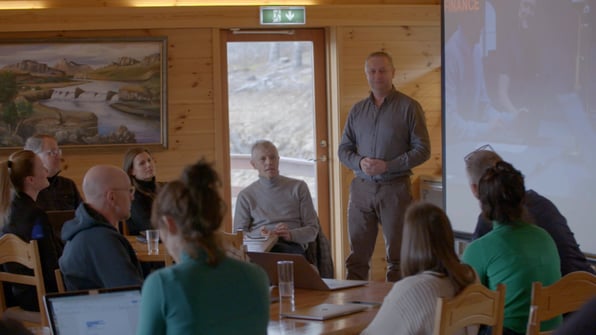Desired State: Where do we want to go?

In all goal-setting, describing your desired state—where you want to end up—is actually the first step. Make your dream real in your mind’s eye and the path to it becomes clearer.
Focusing on your organization’s future state of strategy can take many forms. What kind of relationships do you want with your team? How does communication look—is it prompt, clear, and respectful? Does everyone understand the mission, values, vision, and strategy to reach those goals?
Imagination vs. reality
The subconscious can’t differentiate between what we imagine and our external reality. If we form a mental picture including sounds, tastes, smells, and other perceptions, these take on the character of reality for us. A powerful image can take hold of our subconscious and convince us that it’s real.
Our subconscious can monitor from five to nine concepts at a time (the 7 +/- 2 principle). There are limits to what we can effectively focus on, even subconsciously. It’s important to deliberately choose what to give our attention to—and schedule the rest as appropriate.
If, for example, you decide to buy a new car, your dream Tesla becomes center stage. Advertisements fills our head with visuals, we smell the new-car smell, see ourselves looking smug at the charging station. And then we begin to see a Tesla at every stoplight!
This can work to our disadvantage too. Don’t think about kangaroos. Don’t think about a big grey beast hopping around the outback with a joey waving from her pouch, happily crunching sweet alfalfa.
Or—a little closer to home—an executive says We’ll never be able to manage that; or That’s not the way we’ve always done it; or It’s too risky (before the risks have even been assessed). That doubt acts as a wet blanket over the organization, smothering initiative and often ending (at best) in quiet quitting.
Work with the desired state in your organization
An unlikely place to start planning your desired state is with your current state analysis of obstacles. Speculate on various paths around, under or over complications.
Times of serious challenge, though felt throughout the organization, will of course be especially obvious during meetings. This is where the leaders’ optimism can begin to pervade offices, hallways and cubicles from the top down. Issues are of course addressed, but not given star billing (particularly at the opening of a meeting, which sets the tone).
For those in your organization heavily invested in negativity and in the current state analysis, perhaps offer a challenge: participate in brainstorming all reasonable what ifs and but we can’ts to explore alternative stories.
The model
Very simple, but fantastically effective:

Fill your brain with what you want!
The secret of this model is that when you achieve the desired state, it then becomes your present state. You’ll have changed the state you were unhappy about without giving it unhealthy focus. You’re then ready to consider your next desired state. Just think about the colossal strength in this small, simple model!
A real-life example
Years ago I met with the top executives of a medical equipment manufacturer at an off-site conference. The first night there, they learned they’d lost a lawsuit over a patent they considered crucial to their organization. They also each suffered loss on their company stock. The next morning, the CEO said: “Starting now, we will not talk about our loss, and not a word about crisis. We’ll focus completely on the next steps, choose another product to promote—and also, we will not fire anyone.”
Attention was diverted from possible budget cuts and layoffs to the desired state. For the next three days, the management team were on a creative journey that couldn’t be dimmed by any momentary, knee-jerk negativity.
Their journey to the next future state of strategy had begun.
Now a question for you
When you plan your strategy, do you focus on the future state of your strategy or do you focus on limitations?
Have a free call with one of our Strategy Execution Experts to discuss the best way to arrange your strategy for a successful execution and achieve your desired state.










